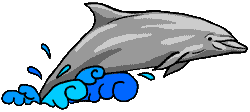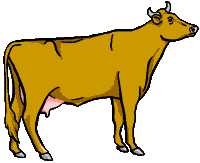| MUTANT HIGH TEMPERATURE INDICATOR ORGANISMS by Jim Bynum FECAL COLIFORM Fecal coliform is an environmental term used by EPA's Office of Water whose charter appears to only address organisms and mammals found in water. The implication is that bacteria which grow at a temperature of 44.5° C. (112.1° F) are found in marine mammals and do not harm animals & humans. EPA claims fecal coliform are found in the intestinal tracts of mammals The human body will die at an internal temperature of 42.5° C. (108.5° F) IN 1919, scientists said, "True thermophilic bacteria are those that grow at temperatures above the maximum temperature for the great majority of bacteria, especially the pathogenic forms." Since then the line has blurred and names have changed. The Actinobacteria and nocardia bacteria are soil-inhabiting microorganisms that now cause brain and other organ abscesses in humans. Fecal Coliform Bacteria: Bacteria found in the intestinal tracts of mammals. Their presence in water or sludge is an indicator of pollution and possible contamination by pathogens. http://www.epa.gov/OCEPAterms/fterms.html total coliforms are common inhabitants of ambient water and may be injured by environmental stresses (e.g., lack of nutrients) and water treatment (e.g., chlorine disinfection) in a manner similar to most bacterial pathogens and many viral enteric pathogens. http://www.epa.gov/safewater/disinfection/tcr/regulation.html On average a whale's body temperature is a couple degrees more then humans (98.6° F) but varies with each whale species. Fecal coliform is the standard EPA uses to assure the public of the safety of drinking water, reclaimed water as well as sewage sludge used as biosolids soil amendment and fertilizer. For EPA testing standards, an environmental form of Escherichia coli is the fecal coliform. EPA allows two million E. coli bacteria per gram of Class B sludge. That is 56 million most probable number of E. coli per ounce of sludge biosolids. That would hardly qualify as sterile biosolids where the pathogens have been destroyed. According to a study by JOSE L. ALONSO, et.al., (May 1999), "Since fecal coliforms are not defined taxonomically, Escherichia coli is the only member species for which standardized data exists." The standard test procedure showing E. coli growth is run at a temperature of 44.5° C. (112.1° F) for 24 hours. On the other hand, the human body will die at an internal temperature of 42.5° C. (108.5° F) and blood is said to coagulate at 42.6° C (108.68° F). The question then becomes, are the test really showing E. coli from the human gut? "organisms have evolved to survive at different temperatures. Mesophiles exhibit optimum growth in the 20-37° C range, whereas thermophiles grow optimally in the 50-70° C range, and extreme thermophiles at > 65° C." So why would EPA develop a test to find a bacteria that grows between the Mesophile and thermophile temperature range? Outside the human gut, E. coli is a pathogen that will actually form biofilms in other parts of the body. The fecal coliform test used for drinking water tells us nothing about the E. coli that grows at human body temperature or the changes due to antibiotic treatment for diseases such as Urinary tract infections that may be caused by bathing in contaminated drinking water or dental diseases caused by bacteria not shown in the test.
Urinary tract infections (UTIs) account for about 8.3 million doctor visits each year.* Research funded by the National Institutes of Health (NIH) suggests that one factor behind recurrent UTIs may be the ability of bacteria to attach to cells lining the urinary tract. A recent NIH-funded study found that bacteria formed a protective film on the inner lining of the bladder in mice. Many women suffer from frequent UTIs. Nearly 20 percent of women who have a UTI will have another, and 30 percent of those will have yet another. Of the last group, 80 percent will have recurrences. Most infections arise from one type of bacteria, Escherichia coli (E. coli), which normally lives in the colon. Usually, the latest infection stems from a strain or type of bacteria that is different from the infection before it, indicating a separate infection. Even when several UTIs in a row are due to E. coli, slight differences in the bacteria indicate distinct infections. Microorganisms called Chlamydia and Mycoplasma may also cause UTIs in both men and women, Some microbes, like Chlamydia and Mycoplasma, can be detected only with special bacterial cultures. http://kidney.niddk.nih.gov/kudiseases/pubs/utiadult/index.htm If Total Coliform are the pathogenic enterobacteriaceae family of enteric bacteria, including E. coli, found in the intestinal tract of animals and humans, why would EPA imply that fecal coliform is something other than pathogenic and nonpathogenic E. coli from the same source when sewage effluents (sludge/biosolids, and reclaimed water) are involved? What is alarming is that E. coli 0157:H7 doesn't show up in the coliform test even when it grows at 44.5° C. (112.1° F). A sub group of total coliforms are called fecal coliforms, and are defined by their ability to ferment lactose at elevated incubation temperatures. Fecal coliforms are primarily Escherichia coli, although Klebsiella pneumoniae can occasionally grow at 44.5°C. However, according to EPA, they might not ferment lactose if they are injured, “Total coliforms are a group of closely related bacteria that are (with few exceptions) not harmful to humans. Because total coliforms are common inhabitants of ambient water and may be injured by environmental stresses (e.g., lack of nutrients) and water treatment (e.g., chlorine disinfection) in a manner similar to most bacterial (index) pathogens and many viral enteric (index) pathogens, EPA considers them a useful indicator of these pathogens." What we have is some very damaging fact sandwiched between two half-truths or lies.The operative words are (with few exceptions) coliforms are harmful pathogens to humans. As I understand the science, there are wild E. coli strains, tame commercial recombinant Escherichia coli Host strains, and at least 200 0:H E. coil strains such as 0157:H7. E. coli is the primary member of the coliform group with the ability to ferment lactose at 44.5 C (112.1°F) within 24 hours. The fermented lactose cause the test sample to change colors. Verification of E. coli is achieved by a color change Yellow = total coliforms, Yellow/fluorescent = E. coli. Twenty-four hours later you can get a most probable number of viable E. coli. After 28 hours, many of the injured coliforms start to recover viability and that voids the test. However, there is a problem using the fecal coliform test on reclaimed water and sludge/biosolids. "Unlike other E. coli, isolates of serotype O157:H7 do not ferment D-sorbitol within 24 h, lack-glucuronidase activity, and did not normally grow at 44.5°C" However, a recent study, July 2007, found thermotolerant 04 (Uropathogenic E. coli, UPEC), 025 (Enterotoxigenic E. coli, ETEC), 086 (Enteropathogenic E. coli, EPEC), 0103 (Shiga-toxin producing E. coli, STEC), 0157 (Shiga-toxin producing E. coli, STEC), 08 (Enterotoxigenic E. coli, ETEC) and 0113 (Shiga-toxin producing E. coli, STEC) in drinking water systems. To verify the facts, I went to EPA's expert Mark Meckes. In a message dated 7/16/2007 10:44:11 A.M. Pacific Daylight Time, [email protected] writes: "Fecal indicator bacteria are used to assess the microbiological quality of water because although not typically disease causing, they may be found in relatively high densities following a pollution event and they have been (but are not always) detected in concert with some waterborne disease-causing (pathogenic) organisms." An example would be the 1993 Milwaukee Drinking Water cryptosporidiosis Outbreak. "When disease case estimates were adjusted for normal background diarrheal disease rates, investigators estimated that 403,000 residents of the five-county area experienced illness caused by the cryptosporidiosis outbreak (6). Of this group, an estimated 354,600 persons (88%) did not seek medical attention; 44,000 persons (11%) were seen as outpatients; and 4,400 persons (1%) were hospitalized." Various estimates for deaths have ranged from just a few to over 400. While the initial response blamed it on manure, 4 years later CDC responded: "of the isolates tested in experimental infection studies, none could successfully infect laboratory animals. These results lead us to suggest the possibility of a second transmission cycle that is anthroponotic and maintained through person-to- person contact or through human sewage contamination of the water supply." To further clarify, In a message dated 7/16/2007 12:53:54 .P.M. Pacific Daylight Time, [email protected] writes: "For example, most strains of Escherichia coli will ferment lactose under the elevated temperature test for fecal coliform and therefore will meet the definition of "fecal coliform."Similarly, some strains of Klebsiella will also ferment lactose under these same test conditions and will meet the definition of "fecal coliform"." . ESCHERICHIA COLI: Besides being the number one cause of human urinary tract infections, E. coli has been linked to diseases in just about every other part of the body. Pneumonia, meningitis, and traveler's diarrhea are among the many illnesses that pathogenic strains of E. coli can cause. Pathogenic strains of E. coli can cause severe cases of diarrhea in all age groups by producing a powerful endotoxin. [Central America Shigella strain Toxin] Treating E. coli infections with antibiotics may actually place the patient in severe shock which could possibly lead to death. This is due to the fact that more of the bacterium's toxin is released when the cell dies. Klebsiella: Klebsiella's pathogenicity can be attributed to its production of a heat-stable enterotoxin. K. pneumoniae is second only to E. coli as a urinary tract pathogen. Klebsiella infections are encountered far more often now than in the past. This is probably due to the bacterium's antibiotic resistance properties. Klebsiella species may contain resistance plasmids (R-plasmids) which confer resistance to such antibiotics as ampicillin and carbenicillin. To make matters worse, the R-plasmids can be transferred to other enteric bacteria not necessarily of the same species. The state of Virginia doesn't even try to fool the public any more, except, were it makes a mistake. 72- hundred miles of rivers and streams are contaminated with fecal bacteria and other pollutants. 720 miles don't meet the current bacteria limit. State regulators say it is impossible to meet the standard, so they want to raise the limits for bacteria in water. Isn't that strange, even the reporter at Channel WDBJ 7 in Richond knew, "People who swallow water with E. coli can suffer from vomiting and diarrhea." Virginia is one of the states using the 1890 Opinion of Iowa state Judge John Dillon to justify forcing counties and sludge disposal site neighbors, as well as city folks, to accept pathogen contaminated sewage effluent for beneficial use based on a cheap fecal coliform test for E. coli. Now, that Judge didn't know E. coli was a pathogen -- and -- apparently neither do the Virginia Water Board, DEQ, or Health Department. According to reporter Sarah Watson, July 27, 2007, the Virginia Department of Health (VDH) is blaming E. coli river pollution on everything except biosolids. She reports, "In addition to agricultural sources of E. coli - such as livestock walking and wading in streams - other major sources for fecal coliform bacteria in the 20 streams in Falling River’s watershed include failing septic systems, pipes dumping raw sewage from homes into streams, pet waste and wildlife." Futhermore, "Though biosolids are cause for concern for many living in the watershed, treated sewage sludge fertilizer wasn’t calculated into the study plan because the material has a lower bacterium count than natural soil, the study said." VHD claims natural soil has over 56 million E. coli bacteria per ounce of soil?? VDH allows 2 million E. coli per gram of biosolids X 28 = 1 ounce.. Hmm, the original Theory was that E. coli died in the environment? FECAL COLIFORM QUESTION -- MARK MECKES EPA Virologist -- Microbiologist Fecal Coliform Question -- Alan Rubin Retired EPA author of Part 503 Sludge Regulation??? Fecal Coliform Question -- James Smith Chairman EPA Pathogen Equivalency Committee Fecal Coliform Question -- Jini Mohanty. (pronounced GEE-nee; loosely derived from the Arabic for magician) Coliform Question -- Rufus Chaney -- USDA - EPA Debunking Coliform and the USGS -- Sheridan Kidd Haack (U.S. Geological Service) COLIFORM (E. coli) AND MASTITIS ON THE FARM UC Davis -- Coliform or Pathogen? COLIFORM -- ENTERIC PATHOGENIC DISEASE ORGANISMS. EPA -- WEF |




Mammal
Mammal
Land organism
Land organism
Land organism


Organism
Organism
Organism